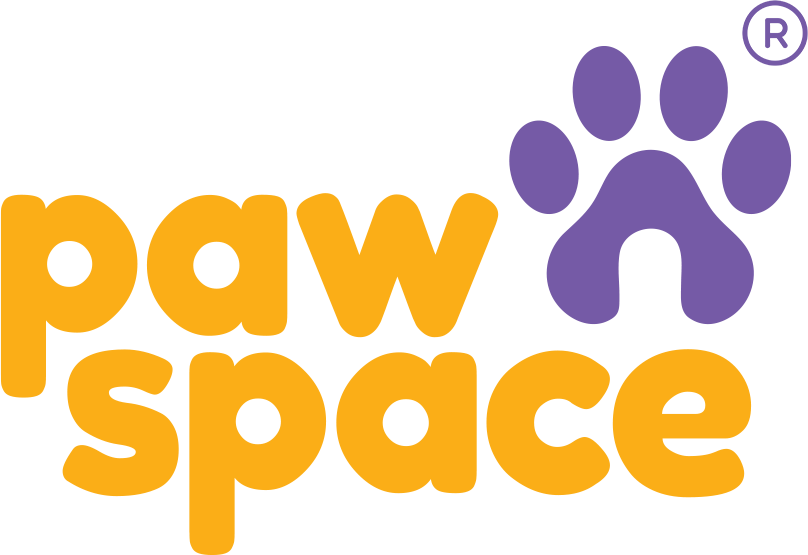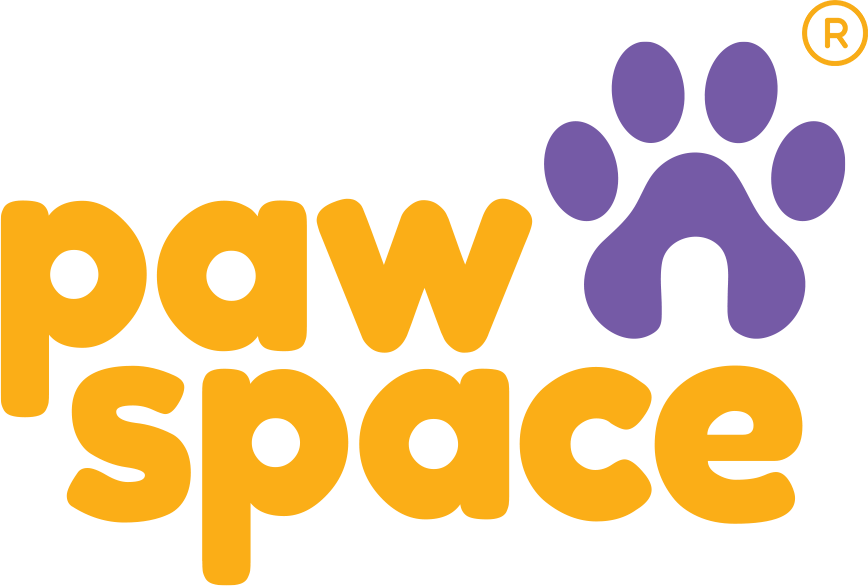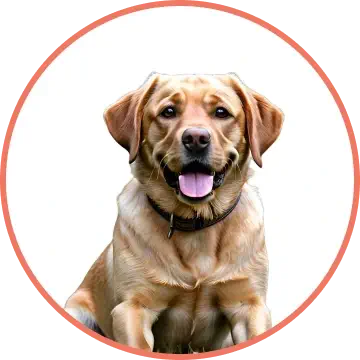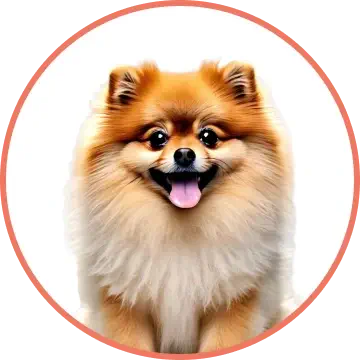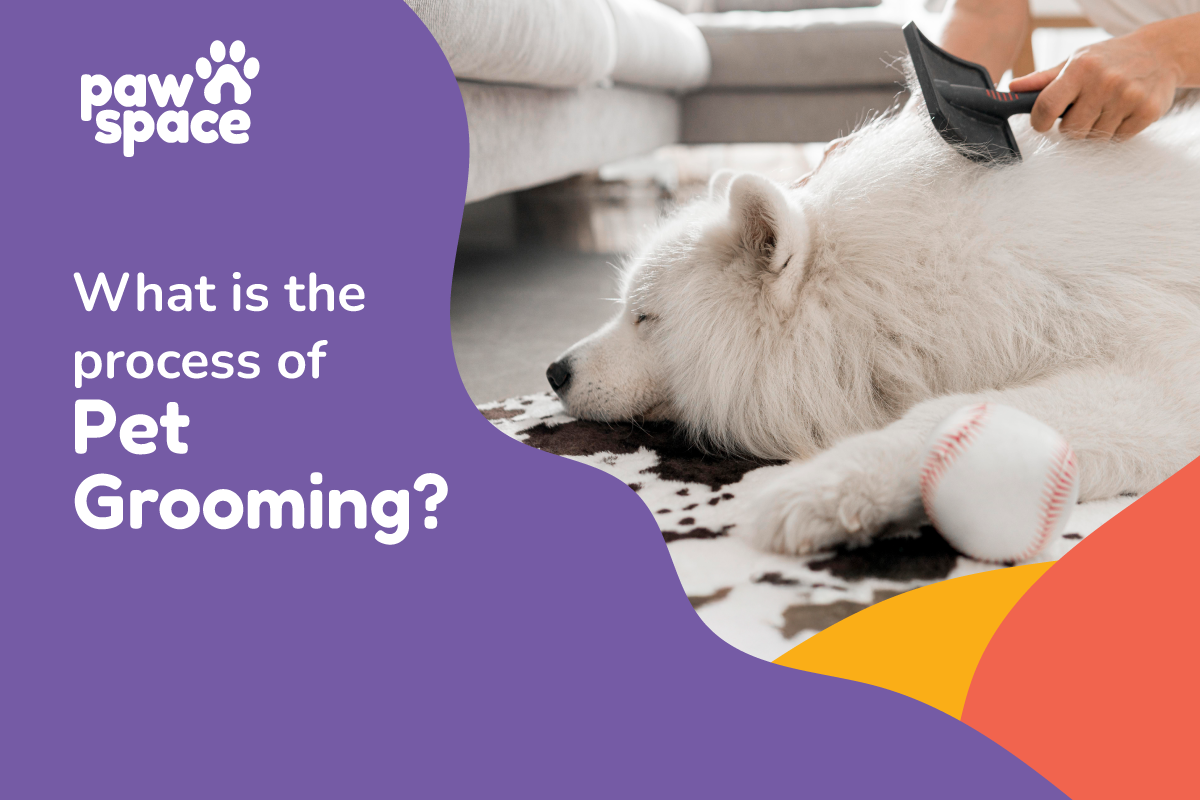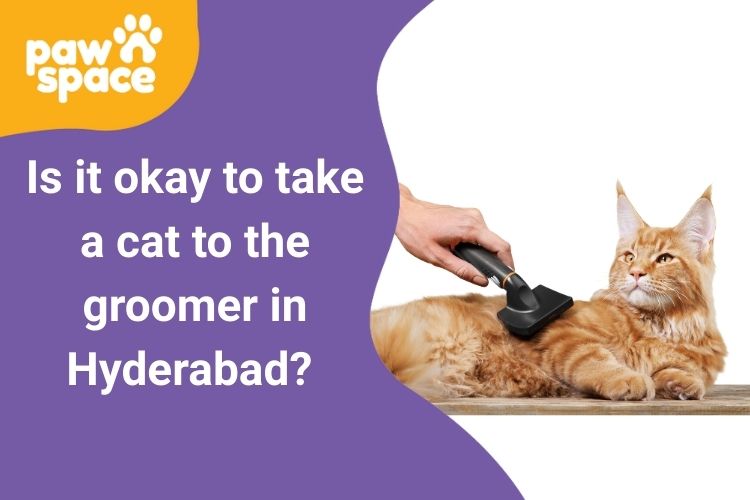Process of Pet Grooming Hyderabad is not just a cosmetic routine; it’s essential to your pet’s well-being and comfort. If “how to do pet grooming” is constantly on your mind, then this blog is for you!
Table of Contents
Toggle- Introduction
- What Is the Process of Pet Grooming Hyderabad?
- 1. Pre-Grooming Checkup
- 2. Brushing and De-Matting
- 3. Bathing
- 4. Drying
- 5. Nail Trimming
- 6. Ear Cleaning
- 7. Hair Trimming or Styling (If Necessary)
- 8. Teeth Brushing (Optional)
- 9. Final Touches
- Pawspace: The safe space for your pets
- Why Choose Pawspace?
- Conclusion
- FAQs
- 1. How long does a full grooming session take?
- 2. How frequently should my pet be groomed?
- 3. Can I groom my pet at home?
- 4. What if my pet is nervous about grooming?
- 5. Do short-haired pets need grooming?
Introduction
No matter if you’ve got a matted dog, a shiny cat, or a bunny with the fluffiest fur, grooming is the key part of pet grooming. It’s not just about having a clean, cute pet, it’s about keeping them healthy overall, preventing infection, and ensuring they feel fantastic in their own fur (and skin). Grooming also further enhances the parent-pet relationship, as it allows one to check for early warning signs of illnesses like lumps, parasites, or skin issues.
So what goes on in a grooming session? How to do pet grooming, and how to get your pet ready for it? Whether you’re considering professional grooming or would like to do it yourself, being informed about the process can make it a positive experience for you and your pet.
Whether your dog loves baths or runs the other way when you spell “B-A-T-H,” bathing your dog regularly is an important part of caring for your pet. It helps maintain their skin and coat health, reducing the risk of infections and keeping them clean and comfortable. You’ll just need the right supplies, a good technique, and some pointers.

What Is the Process of Pet Grooming Hyderabad?
Pet grooming is a multi-step ritual that involves cleaning and maintaining your pet’s coat, skin, nails, ears, and sometimes teeth. While the exact procedure is probably not identical for all pets because of breed, coat type, and health needs, most grooming sessions follow a similar pattern:
1. Pre-Grooming Checkup
A complete health examination is first conducted. This includes:
- Examining the skin for rashes, bumps, or parasites
- Checking for infection or wax build-up in ears
- Checking for overgrowth or breaks in nails
- Examining coat condition (i.e., mats, tangles, dryness)
- Checking behavior for anxiety or stress
This initial step ensures that the pet is healthy enough for grooming and allows the session to be tailored to their needs.
2. Brushing and De-Matting
Brushing is the initial stage of grooming. Brushing removes loose fur, dirt, and debris and spreads natural oils throughout the coat. There are many tools used by groomers based on coat type:
- Slicker brushes for matting and untangling
- Deshedding tools for heavy shedders like Huskies
- Combs for delicacies and sensitive areas
If mats are present, they’re resolved or clipped very gently so as not to tug at the skin. Brushing once a day also prevents shedding and removes painful skin disorders.
3. Bathing
Following the brush-out comes the bath. Groomers use lukewarm water and pet-hypoallergenic shampoos designed to your pet’s skin type: hypoallergenic, flea-control, or medicated, for instance. Bathing entails:
- Wetting the coat thoroughly
- Lathering with shampoo and working into the skin
- Rinsing to avoid residue
- (Optional) Conditioning for softness and detangling
Bath eliminates dirt, allergens, and odor and soothes the skin. It also provides a chance to inspect the skin more thoroughly after the fur is damp.
4. Drying
After the bath, animals are blow-dried and towel-dried with a pet-safe dryer. Low heat and soft air is employed by the groomers to avoid overheating or scaring the animal. During drying, the coat is brushed again to prevent knots and to make the fur look fluffier.
Some pets may be air-dried if they happen to be noise- or heat-sensitive, such as cats or tiny dogs.
5. Nail Trimming
Overgrown nails are painful, posture-compromising, and even infectious. Trimming by groomers is done with care to avoid cutting the quick (the sensitive blood vessel within the nail). Bleeding is stopped by using styptic powder.
Trimming every 3–4 weeks is crucial to your pet’s comfort and mobility.
6. Ear Cleaning
Ears are cleaned with an approved-by-a-vet solution and cotton balls. This removes dirt, wax, and infection-causing moisture. Groomers do not put anything deep within the ear canal for fear of damage.
Floppy-eared breeds or ear-infection breeds (like Cocker Spaniels) may need to be cleaned more frequently.
7. Hair Trimming or Styling (If Necessary)
For styles that require haircuts (e.g., Poodles or Shih Tzus), the groomer clips the coat using clippers or scissors. Common areas to clip include:
- Eyes and ears
- Paws and sanitary areas
- Trims all over the body for breed styles
Some animals also receive breed-specific trim or seasonal trim to stay cool during summer or tidy in winter.
8. Teeth Brushing (Optional)
Some grooming sessions also include dental care. Brushing your pet’s teeth will prevent the buildup of plaque, gum disease, and bad breath. Groomers use pet-safe toothpaste and brushes designed for animal mouths.
While not every pet can tolerate this step, regular dental grooming is an excellent supplement to overall grooming.
9. Final Touches
The session is finished with finishing touches such as:
- Application of paw balm or coat spray
- Accessory placement such as bows or bandanas
- Final check for cleanliness and comfort
As they go along, the groomers use positive reinforcement, treats, compliments, and gentle handling, to keep pets relaxed and cooperative.
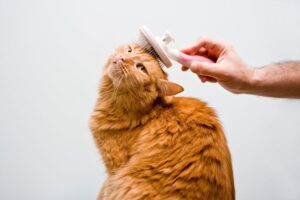
Pawspace: The safe space for your pets
We at Pawspace are dedicated to providing top-notch care and companionship for your
beloved pets. Honoured to be India’s biggest pet-centred community! Created and curated by pet parents.
Our services include pet grooming, pet boarding, pet sitting, doorstep dog training, dog walking, pet taxi/cab, pet relocation, pet funeral, cat grooming, etc.
Why Choose Pawspace?
- Available on demand for pet parents everywhere
- Verified caregivers with a 5-point checklist & rigorous background checks
- Be at peace by receiving regular updates through chats, photos and videos
Conclusion
Pet grooming is a comprehensive process that goes far beyond a simple bath. From bathing and brushing to ear cleaning and nail clipping, each step plays a part in your pet’s overall health, cleanliness, and well-being. Whether you groom your pet yourself or use the services of a professional, understanding the process enables you to make informed decisions and lets your furry friend receive the level of care they deserve.
Daily grooming doesn’t just make your pet look great: it also strengthens your bond and detects health issues early. So grab that brush or schedule that appointment, your pet will thank you with tail wags and purrs.
FAQs
1. How long does a full grooming session take?
Typically 1.5 to 3 hours, depending on your pet’s size, hair type, and personality.
2. How frequently should my pet be groomed?
Most dogs are best groomed every 4–8 weeks. Pets with long hair or skin problems might need regular grooming.
3. Can I groom my pet at home?
Yes, basic grooming like brushing and bathing can be performed at home. For haircuts, nail grinding, or anxious pets, professional help is best.
4. What if my pet is nervous about grooming?
Start slowly, use treats, and link the groom sessions to positive reinforcement. Professional groomers are skilled at working with anxious pets and can give desensitisation sessions.
5. Do short-haired pets need grooming?
Yes! Short-haired pets also need regular brushing, nail trimming, and ear cleaning to stay healthy and feel comfortable.
